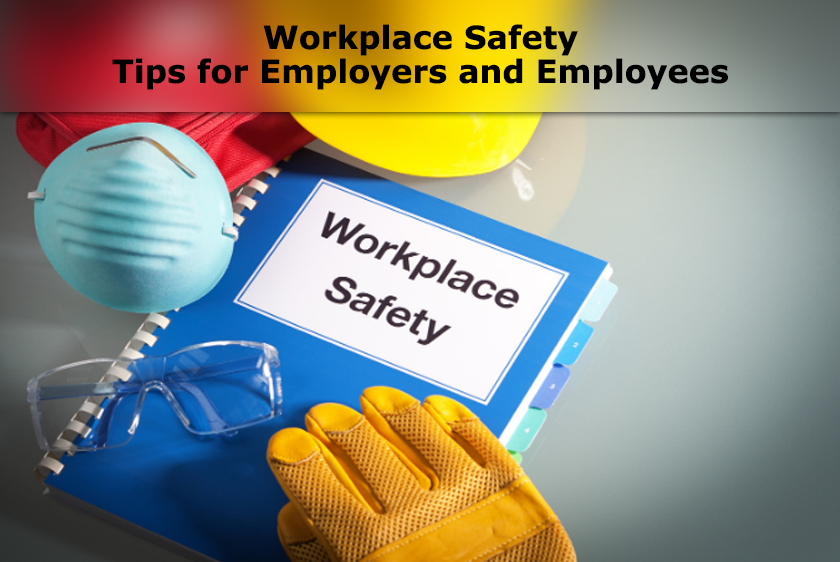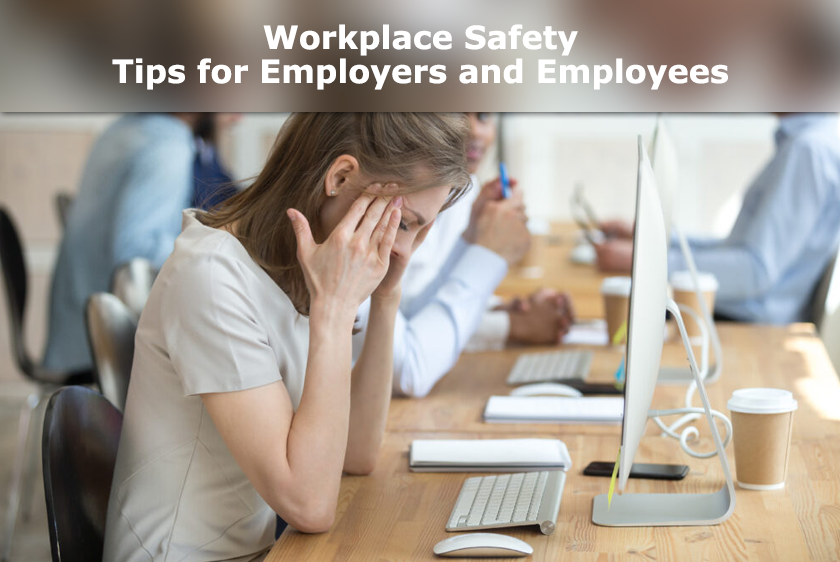

Hey friends,
June is National Safety Month, an ideal time to reflect on the necessity of workplace safety. I want to share a personal experience that highlights why safety, both physical and digital, is crucial.
Why Workplace Safety Matters

Workplace safety is essential for several reasons: it prevents injuries and accidents, reduces costs associated with medical expenses and lost productivity, and fosters a positive work environment. A safe workplace boosts employee morale and enhances efficiency and job satisfaction. In our digital age, safety also includes protecting against cyber threats, which can compromise sensitive information and disrupt operations. Reflecting on this, I recall a time when I had the unfortunate experience of being hacked. For over a week, my website, emails, and access to crucial information were all taken away. This nightmare made me realize how vulnerable we can be if we don’t take comprehensive safety measures. Here’s how you can ensure your workplace is safe and secure, both physically and digitally.
Physical Safety Tips for Employers
- Create a Safety Plan
Develop a detailed safety plan tailored to your workplace’s specific needs. This plan should outline potential hazards, safety procedures, emergency protocols, and each employee’s responsibilities. It should also include cybersecurity measures to protect digital assets and sensitive information.
- Conduct Regular Training
Regular training sessions are vital to keep employees aware of safety procedures, including digital security practices. This includes training on equipment use, emergency drills, first aid, and recognizing phishing attempts or other cyber threats. Refreshers should be conducted periodically to ensure knowledge retention.
3. Ensure Proper Equipment and Tools
Provide employees with the necessary safety equipment and tools. This includes personal protective equipment (PPE) like gloves, helmets, and safety goggles. Regularly inspect and maintain equipment to ensure it remains in good working condition.
- Emergency Preparedness:
Develop and practice emergency plans for situations like fires, earthquakes, or medical emergencies. Regular drills make sure everyone knows their role and can act quickly in a crisis.
- Ergonomic Workspaces:
Design workspaces to reduce strain and injury. It includes adjustable chairs, ergonomic keyboards, and monitor stands to promote proper posture and reduce repetitive strain injuries.
- Perform Regular Safety Inspections
Conduct regular safety inspections to recognize and mitigate potential hazards. This proactive approach helps avoid accidents before they occur. Document these inspections and address any issues promptly. Similarly, conduct cybersecurity audits to identify and address vulnerabilities in your digital infrastructure.
Cyber security Measures
- Cybersecurity Training:
Educate employees about the importance of cybersecurity. This includes recognizing phishing emails, using strong passwords, and understanding the risks of unsecured networks.
- Regular Software Updates:
Keep all software updated to protect against vulnerabilities. Hackers often exploit outdated software to gain access to systems.
- Data Encryption:
Encryption is used to secure sensitive data both in transit and at rest. This ensures that even if information is intercepted, it remains unreadable to unauthorized users.
- Access Controls:
Implement strict access controls to ensure only legitimate personnel can access sensitive information. This includes using multi-factor authentication and regularly reviewing access permissions.
- Incident Response Plan:
Develop a well-organized incident response plan to address potential cyber threats. It should include steps for identifying, containing, and mitigating attacks, as well as communicating with stakeholders.
Tips for Employees

- Follow Safety Procedures
Always follow the safety procedures and protocols established by your employer. It includes wearing the appropriate PPE, using tools and equipment correctly, and following emergency protocols. Also, follow cybersecurity guidelines such as using strong passwords, not sharing login details, and being cautious of suspicious emails or links.
- Stay Alert and Aware
Remain vigilant and aware of your surroundings. Being alert can help you identify potential hazards and react promptly to avoid accidents. Avoid distractions and concentrate on your tasks. In the digital realm, be cautious of phishing attempts and suspicious online activity.
- Report Unsafe Conditions
If you notice any unsafe conditions or possible hazards, report them immediately. Your prompt action can prevent accidents and keep your workplace safe for everyone. Similarly, report any suspected cyber threats or breaches to your IT department immediately.
- Participate in Training
Engage actively in all safety training sessions. Ask questions if you’re unsure about any procedures, and practice the skills you learn. Proper training can significantly minimize the risk of accidents. Cybersecurity training is equally important to protect sensitive information and maintain digital safety.
- Take Care of Your Health
Your health and well-being are crucial for workplace safety. Ensure you get proper rest, eat healthily, and stay hydrated. Fatigue and poor health can impair judgment and increase the risk of accidents. A healthy mind is also better equipped to recognize and respond to cybersecurity threats.
Integrating Physical and Cyber Security
- Unified Security Protocols:
Create security protocols that address both physical and digital threats. These protocols include policies for securing physical access to sensitive areas and protecting digital assets.
- Cross-Training:
Train security personnel in both physical and cybersecurity measures. It ensures they can identify and respond to a wide range of threats.
- Use of Technology:
Utilize technology to enhance security. It includes surveillance cameras, access control systems, and cybersecurity tools like firewalls and intrusion detection systems.
In conclusion, workplace safety in today’s world requires an extensive approach, including physical and cybersecurity measures. By staying vigilant and proactive, you can ensure a safe and secure environment for your employees and business. Remember, safety is an ongoing challenge that requires continuous review and adaptation based on your business needs.
Stay safe,
Shannon Jackson
The People’s Nurse
Join Us:







